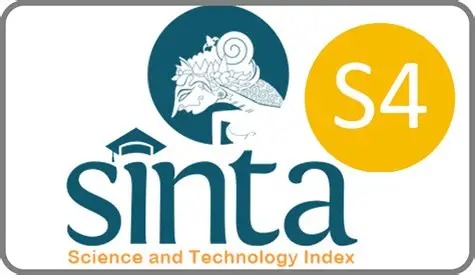Productivity Analysis Using the Multi Factor Productivity Measurement Model (MFPMM) as an Effort to Increase Competitiveness (Case Study: WL Alumunium Yogyakarta)
DOI:
https://doi.org/10.14421/jiehis.3785Keywords:
MFPMM, productivity, profitability, pan, multiple linear regressionAbstract
It is known that the national economy is dominated by Cooperatives and Small & Medium Enterprises (SMEs), this proves that Cooperatives and SMEs have competitiveness and potential that must be maintained. WL Aluminum is an SME located in the Yogyakarta area which is engaged in the metal casting industry with products that include frying pans, citel, pans and other kitchen utensils. In order for a business to survive and continue to grow, it must be able to compete by preparing various strategies so that the products it produces will always exist in the market. One form of strategy that can be used is by measuring the company's productivity. This is used to determine the extent to which the effectiveness of the product produced and the efficiency of the use of available resources. Several variables that affect productivity include raw materials, energy and labor. The purpose of this research is to find out what the productivity index (PI) is for WL Aluminum using the MFPMM, and to find out whether there is an influence between the profitability received by WL Aluminum and productivity and price changes using the Multiple Linear Regression method. The results of productivity calculations using the MFPMM show that PI was in a row October-November 2015, November-December 2015; December-January 2016; January-February 2016; February-March 2016; March-April 2016; April-May 2016 of 1.0064; 1.2370; 0.8545; 0.9016; 0.9607; 1,1,068; 0.7348. The results of the mathematical equation using Multiple Linear regression are profitability (Y): -0.952+ 1.001 productivity (x1) + 0.951 price recovery (x2). Testing with the F test shows that the calculated F value is 1401891.948 with a significance value of 0.000 <0.05. This proves that profitability is influenced by productivity and price changes.
References
Angelica, Yolanda. 2013. Analisis Produktivitas dengan metode MFPMM. Universitas Brawijaya Malang: Jurusan Teknologi Industri Pertanian
Gaspersz, Vincent. 2000. Manajemen Produktivitas Total : Strategi Peningkatan Produktivitas Bisnis Global. Jakarta: Gramedia Pustaka
Gujarati, D.N. 1995. Basic Econometrics. McGraw-Hill International.
Gustanto, Reza, Suharno, Mochamad Maksum. 2015. Effect Of Output-Input Values on Factory Productivity. Indonesia. Department of Agroindustrial Technology Faculty Of Agricultural Technology Universitas Gadjah Mada: Knowledge Publishing Service.
Gustanto, Reza. 2015. Analisis produktivitas Pabrik Gula Madukismo dengan metode Multi Factor Productivity Measurement Model (MFPMM).Skripsi. Universitas Gajah Mada
Hackman, S.T. 2008. Production Economics: Integrating the Microeconomic and Engineering Perspectives. London: Springes.
Heizer, Jay dan Barry Render. 2001. Prinsip-Prinsip Manajemen Operasi. Jakarta: Salemba Empat
Herjanto, E. 2007.Manajemen Operasi Edisi 3. Jakarta: Grasindo
Iriawan Ph.D,Nur, Septin Puji Astuti, S.Si.,MT. 2006. Mengolah Data Statistik dengan Mudah Menggunakan Minitab 14. Yogyakarta: Andi
Mathur, S. 2011. Accounting For Management. New Delhi : Tata Mc Graw Hill Education Private Limited
Ministry of Cooperatives and SMEs of the Republic of Indonesia. 2021.
Mulyadi, 2007. Sistem Perencanaan & Pengendalian Manajemen Edisi 3.Jakarta: Salemba Empat
Nasution, Arman Hakim. 2006. Manajemen Industri. Yogyakarta :Andi
Phusavat, Kongkiti, Anussornnitisarn, P.,Sujitwanit,S & Kess,P. 2009. Profile-Based Circumstances for Productivity Measurement. Industrial Management & Data System, 109 (6), 825-839
Phusavat, Kongkiti.,Jaiwong, P., Sujitwanit,S., & Kanchana,R. 2008. When To Measure Productivity: Lessons From Manufacturing and Supplier-Selection Strategies. Industrial Management & Data System , 109 (3) 425-442
Phusavat, Kongkiti & Watcharapol Photaranon. 2006. Productivity /Performance Measurement Cace Application at The Government Pharmaceutical Organization. Bangkok :Department Of Industrial Engineering Kasetsart University
Phusavat, Kongkiti. 2013. Productivity Management in an Organization Measurement and Analysis. Bangkok : Toknow Press
Prastowo, Andi, S.Pd.I, M.Pd.I. 2010. Memahami Metode-Metode Penelitian. Jogjakarta: Ar-Ruzz Media.
Putra, J Ravianto, Resinus Nainggolan, Murlita Witarsa. 1988. Materi Pokok Dasar-Dasar Produktivitas. Jakarta:Kurnia Jakarta Universitas Terbuka
Ramadani, Santi Dyah. 2015. Analisis produktivitas UKM Roti Bangkit dengan metode Multifactor Productivity Measurement Model (MFPMM). Skripsi. Universitas Gadjah Mada
Sink,D. 1985. Productivity Management: planning, Measurement, and Evaluation, Control and Improvement. New York: Wiley
Downloads
Published
How to Cite
Issue
Section
License
Copyright (c) 2023 Grita Supriyanto Dewi, Khairun Nadiyah

This work is licensed under a Creative Commons Attribution-ShareAlike 4.0 International License.
(c) The Author(s). This article is distributed under a Creative Commons Attribution-ShareAlike 4.0 International License.






